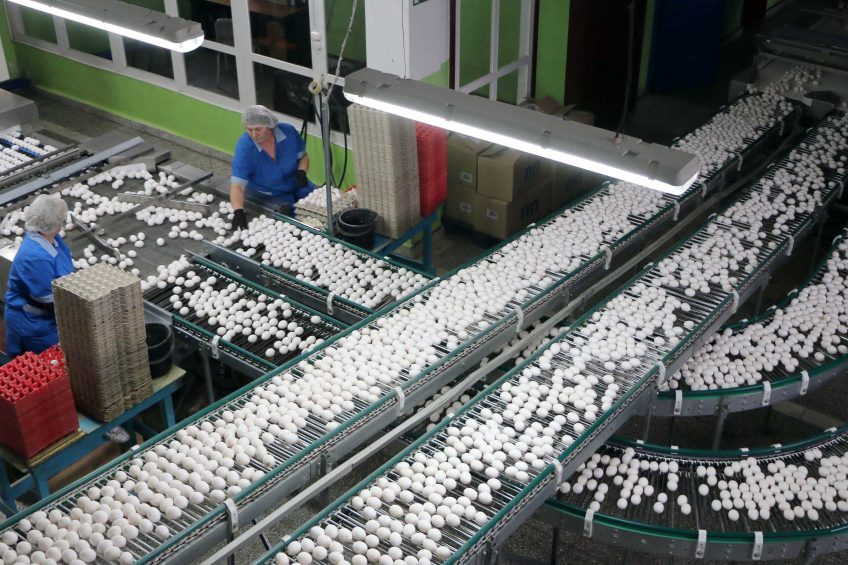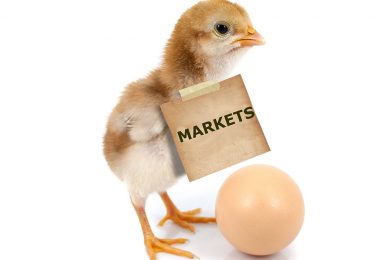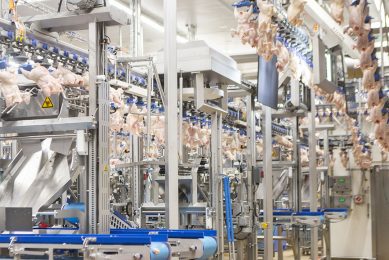Russian egg industry struggles

Russia’s egg industry’s net profit dropped by $?254 million in 2017, as the wholesale prices on the domestic market fell during the year, ending up at $?0.56 per ten eggs. Market research by the Russian Union of Poultry Farmers (Rosptitsesoyuz) notes a 14% drop compared to 2016.
The continuous fall in egg prices that started late in 2016 has already pushed the profitability of the average Russian egg farm down to 3% to 7%, from 12% to 14% seen just a few years ago. What is even worse is that this trend seems to be gaining momentum. Russia produced 44.5 billion eggs in 2017, 2% more than in the previous year. This drives the country’s self-sufficiency on eggs and egg products to 95%, the highest level ever recorded.
The State Statistical Service (Rosstat) reports that the industry is consolidating production. From 2016 to 2017 egg production increased by 4.2%, but in 2017 growth levelled out, with backyard farms and small-scale farmers cutting production by 500 million eggs. This picture is a common one for the Russian livestock industry, where backyards are dying out. Nevertheless, the current price level on the domestic market seems uncomfortable for all kinds of manufacturers. Even the Poultry Farm Sinyavinskaya, the biggest egg producer in Russia, is bleeding, having a net loss of $ 9.3 million in 2017, while its net revenue shrunk by 4%, compared to 2016, to $ 68 million. Sinyavinskaya blamed bad market conditions for these losses.
Expansion in spite of losses
Despite the financial problems of Sinyavinskaya, it is believed that the industry, in general, is doing well, in contrast to the backyard farms. Over the past few years the industry has been facing falling wholesale prices and the rise in production costs. However vertically integrated business are in better shape to deal with that challenge. “For the last several years, the average egg industry profitability has been steadily going down – from 10-12% about 10 years ago, to 3-5% in the last couple of years. The major factors affecting egg production are increasing feed ingredient costs, veterinary preparations, gas and electricity, as well as the dramatic depreciation of the national currency,” commented Albert Davleyev, the President of the Russian consulting agency Agrifood Strategies.
Yuri Trusov, the director for Poultry Farm Lenoblptitseprom told local news outlet Agroinvestor that given the current production costs and prices on the domestic market, the majority of the industry is operating without any margins at all. Mr Trusov admitted that only the large producers were earning money, thanks to the scale, while both middle and small-sized companies were not generating any profit.
It is remarkable that on this background, the major producers are still pumping money into expansion of production capacities. Roskar, one of the major egg producers, has recently invested Rub2.2 billion ($ 34 million) to build a new production and processing facility, plus Rub1.5 billion ($ 23 million) to build a new feed mill in Leningrad Oblast. With these projects, Roskar plans to increase egg production from 1.2 billion eggs in 2017 to 2 billion eggs in 2020, and improve production costs by achieving a complete self-sufficiency on feed.

Leto Group is another market player that is currently expanding its production capacities. The company plans to invest Rub2.2 billion ($ 34 billion) in order to achieve a twofold increase in production performance at the Zaokskaya Poultry Farm in Tula Oblast. Due to large-scale modernisation the facility will produce 320 million eggs per year starting from 2019. In addition, Rub800 million ($ 13 million) is to be invested by the company in order to establish egg processing capacities. Belyanka LLC, a poultry farm in Belgorod Oblast, also aims to achieve a twofold increase in production performance, bringing it to 1 billion units by 2019. The investment cost of the project is estimated at Rub2 billion ($ 32 million). Russian holding Komos Group also invested Rub250 million ($ 4 million) recently to acquire and revive a poultry farm which was almost completely destroyed earlier by an AI outbreak. With this project, Komos Group plans to increase its production performance by about 300 million eggs by 2019.
All in all, the projects announced by the Russian major players could add 3 to 4 billion eggs to the domestic market within the coming three years. The total investment cost of all these projects under implementation or that are planned in the industry could be worth close to $ 250 million. “In the next couple of decades the industry is set to grow primarily due to expansion and further vertical integration of several major egg producers, which will continue to dominate the market through increasing sales to the modern federal and regional retail chains and launching new processing facilities,” Mr Davleyev said.
Processing for the sake of export
Despite some negative market conditions, Rosptitsesoyuz sees strong potential in the domestic egg industry for expanding the processing capacities. By developing the egg processing segment Russia could create more export opportunities, Galina Bobyleva, the general director of Rosptitsesoyuz said. For this reason, some measures designed to stop imports could be really helpful.
The Russian food industry was working primarily with imported egg powder, although the domestic producers had the ability to replace those supplies, Ms Bobyleva said. For this reason, Rosptitsesoyuz intends to lobby to stop importing processed egg products. That step, if taken, would contribute to the development of the processing segment as well as egg industry in Russia in general, Ms Bobyleva added.
Dried and liquid egg products have not been subjected to the food embargo introduced by the Russian government in August 2014. There is no information that Rosptitsesoyuz has really taken any steps aimed to lobby any restrictions on import among the government agencies over the past six month. The press office of the Russian Agricultural Ministry has neither confirmed, nor denied that some restrictions against dried egg products are under consideration right now. Rosptitsesoyuz has also not provided any additional details on that claim by press time.
“A considerable amount of processed egg products are imported as a part of compound mixes for various sectors of the food processing industry. This creates a serious competition for domestic egg producers, who have no capacity and/or interest in producing a wide range of compounds in Russia. The share of eggs going for processing is very limited and doesn’t exceed 10%. Egg processing at most of the egg producing companies is limited to production of egg powder and melange only,” Mr Davleyev estimated.

The development of processing facilities as well as export opportunities could help Russian companies to escape the current problems on the domestic market. Sinyavinskaya aims to raise the export share in sales from the current 5% to 25%, Artur Kholodenko, the general director of Sinyavinskaya revealed. Giving the current market conditions poultry farms plan to maintain the current production level of 1.3 billion eggs per year, so the foreign sales are expected to grow to 325 million units. In 2017 the company started to export to Saudi Arabia and it is already exporting some egg and eggs products to Bahrain, Iraq, Iran, Afghanistan, Qatar and Kuwait.
The same plans were confirmed by Roskar, which exports around 5% of egg and egg products. In addition to the Middle East, some products are also being sold in the European Union. Rosptitsesoyuz earlier forecasted that exports could grow from the 411 million eggs in 2017 to 600 million eggs in 2020, but giving the plans recently declared by the largest companies, the growth could be even more noticeable. A source in the Russian egg exporter sector who wished to not be named commented that the price of eggs and egg products in the Middle East is 20% higher than in Russia, as some countries buying them at $ 0.7 – $ 0.8 per ten eggs.
Russia could increase exports to the Middle East and North Africa by up to 3 billion eggs within the coming several years, the source said. That would make Russian exporters direct competitors to other exporting countries like the Ukraine. “The Russian egg industry may be quite competitive in the Caucasian and Central Asian markets, as well as in the Middle East and Middle Asia. However, the major challenge comes from the Ukraine, which has already dominated very important export destinations like United Arab Emirates, Iraq, Azerbaijan and Qatar,” Mr Davleyev said.













